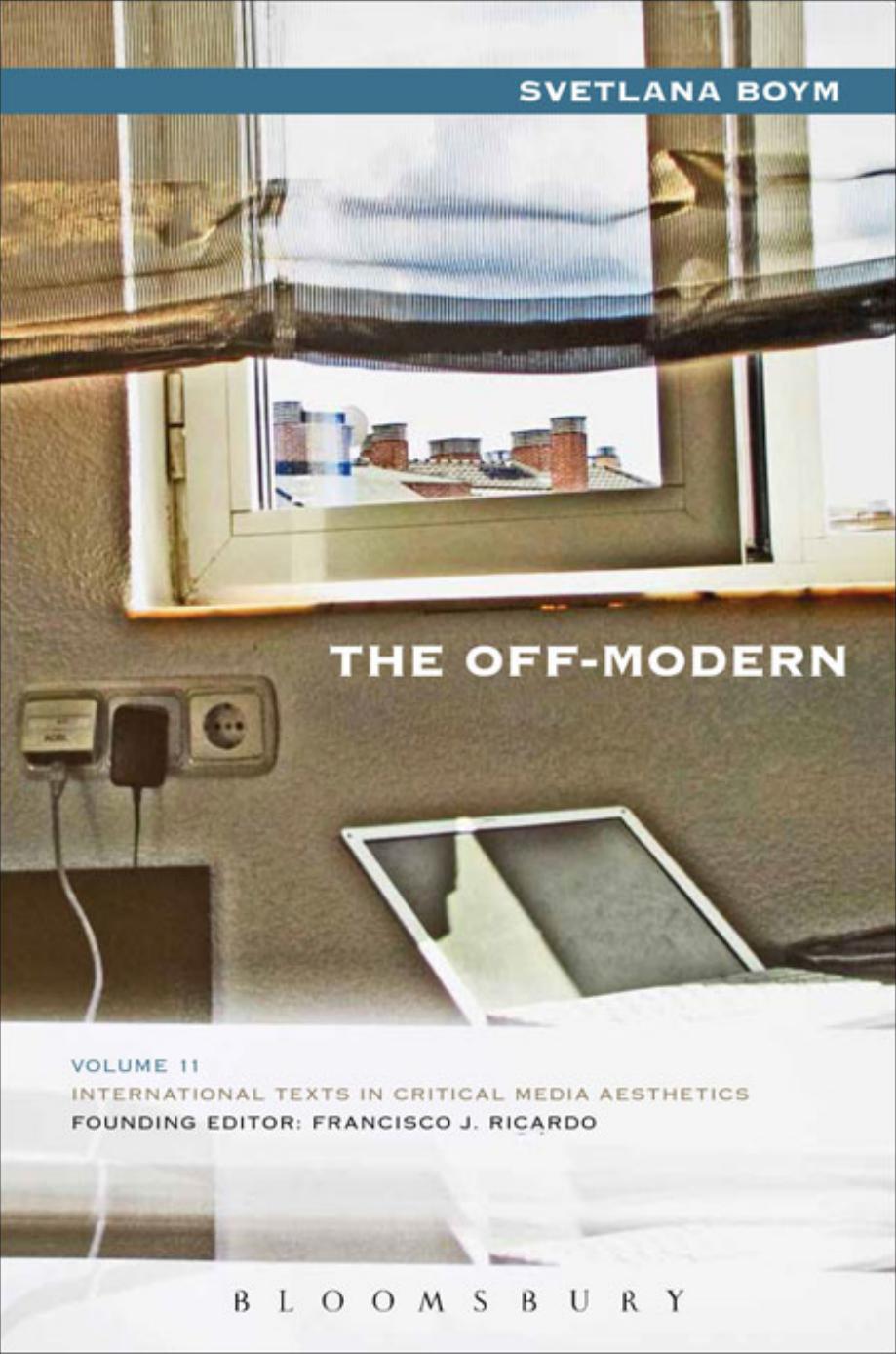The Off-Modern by Svetlana Boym

Author:Svetlana Boym [Boym, Svetlana]
Language: eng
Format: epub, pdf
ISBN: 9781501328954
Publisher: Bloomsbury
Published: 2017-03-30T00:00:00+00:00
Figure 17.1 Vladimir Tatlin, âModel of the Monument to the 3rd International,â 1919â1920. Image courtesy of bpk, Berlin/Art Resource, New York.
17
Estrangement for the World
What if we rethink the history of modern art, and instead of placing the emphasis on form and function (the âformalist theologyâ according to Harold Rosenberg) we focus on trans-formative estrangement, creative perspectivism, and renewal of vision?
This will be not a foundational or metaphysical project but an experimental and phenomenological one that begins with the embarrassment of theory. We reconsider some aspects of the history of the avant-gardes, such as the relationship between art and politics; our key term will not be utopia but freedom, and we will open up and recover a broad field of the left democratic politics of the modernist writers who went against the grain of the dominant versions of the left, right, and center. Along those lines we will deviate from the familiar story of the âdehumanization of artâ in the modern context, exploring modernist humanism and human erring that find many echoes in the recent off-modern projects of William Kentridge and the Raqs Media Collective and other experimental interpreters of the Russian avant-garde. Our other concern will be with third-way thinking and the forms of unconventional modernist humanism and existential dimensions of modern aesthetic practice.
The off-moderns âinvent their own precursorsâ in Borgesian fashion, but not to suck the life out of them in a gleeful postmodern manner, with the severed heads of quotation marks and lots of disco music in the background. Instead of the familiar tale of avant-garde movements and isms each with a promising new beginning, catharsis, and denouement, from rise to fall (into bourgeois decadence, madness, comfortable institutionalization, etc.), the off-modern story seeks elective affinities, alternative solidarities, and diasporic intimacies of multicultural immigrants across national borders. In other words, we pursue what still troubles us today.
In the Anglo-American and Western European contexts, the history of artistic modernity was mostly written through the agonistic struggles of the avant-garde and the advent of âformalist theologyâ elaborated in the wake of the founding of the Museum of Modern Art in New York, which gave a safe haven and helped to institutionalize many refugees from the European wars. According to Clement Greenberg, modernist art practice should be autonomous, inward, self-referential and self-critical. This is a kind of art that constantly and radically âquestions its essence as artâ in order not to become kitsch, a âparody of catharsisâ (Adorno). Obviously, avant-garde art goes beyond its critique, be it that of the modern world or of traditional art. Still the âformal theologyâ and the avant-garde spirituality are conceived as an almost messianic quest for ultimate authenticity, a quest that is responsible for the quick succession of isms that supersede one another.16
One aspect of this history is a form of radical disfiguration that turns a living human body into a âstumbling block on the road to self-sufficiency of artâ (Kuspit) and thus doesnât allow art to confront existential human needs. Of course, this might read
Download
This site does not store any files on its server. We only index and link to content provided by other sites. Please contact the content providers to delete copyright contents if any and email us, we'll remove relevant links or contents immediately.
Kathy Andrews Collection by Kathy Andrews(11739)
The remains of the day by Kazuo Ishiguro(8833)
Paper Towns by Green John(5094)
Spare by Prince Harry The Duke of Sussex(5078)
Industrial Automation from Scratch: A hands-on guide to using sensors, actuators, PLCs, HMIs, and SCADA to automate industrial processes by Olushola Akande(5001)
The Body: A Guide for Occupants by Bill Bryson(4978)
Machine Learning at Scale with H2O by Gregory Keys | David Whiting(4200)
Be in a Treehouse by Pete Nelson(3956)
Never by Ken Follett(3801)
Harry Potter and the Goblet Of Fire by J.K. Rowling(3776)
Goodbye Paradise(3730)
Into Thin Air by Jon Krakauer(3316)
The Remains of the Day by Kazuo Ishiguro(3296)
The Cellar by Natasha Preston(3265)
Fairy Tale by Stephen King(3231)
The Genius of Japanese Carpentry by Azby Brown(3228)
120 Days of Sodom by Marquis de Sade(3185)
Drawing Shortcuts: Developing Quick Drawing Skills Using Today's Technology by Leggitt Jim(3002)
The Man Who Died Twice by Richard Osman(2998)
